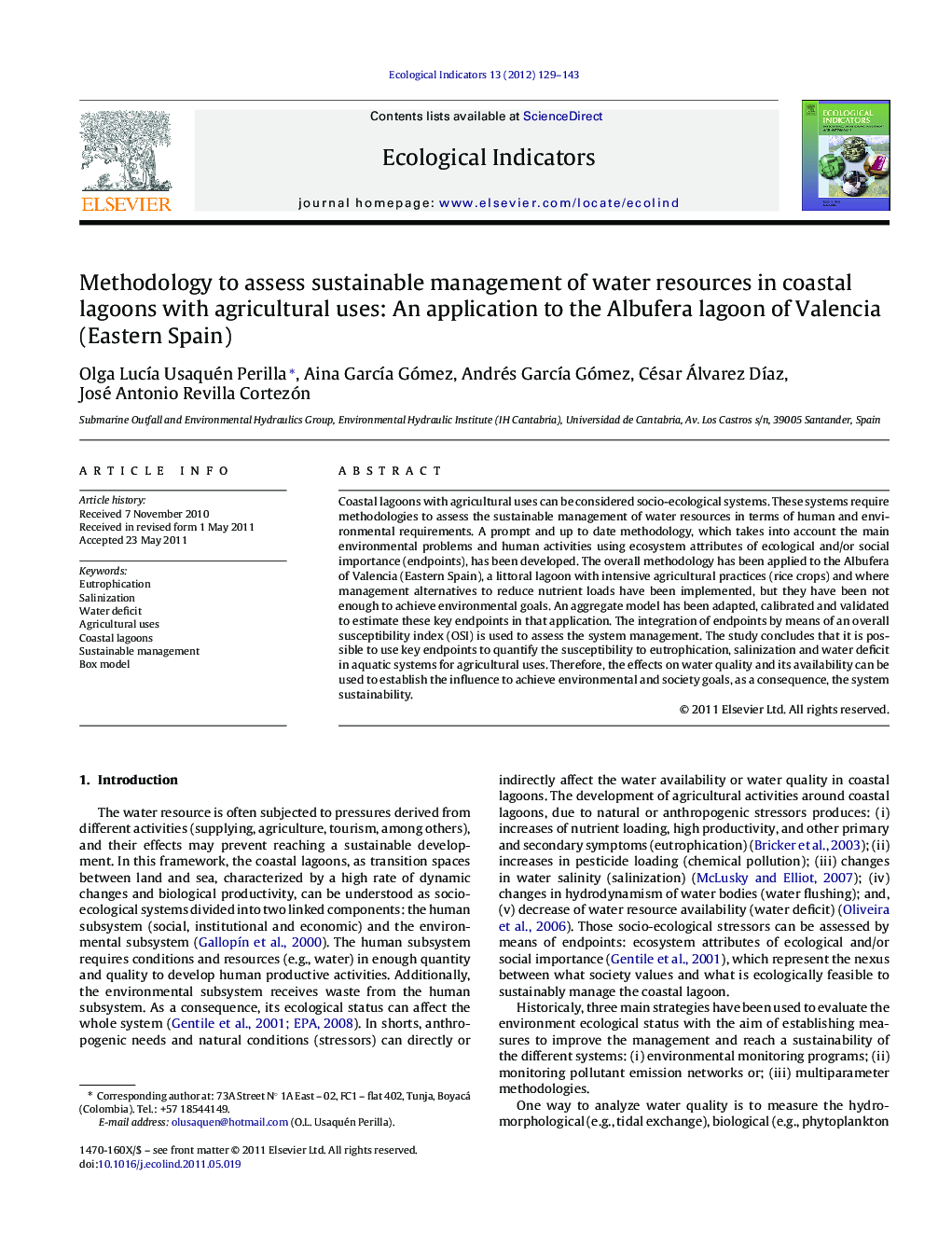| Article ID | Journal | Published Year | Pages | File Type |
|---|---|---|---|---|
| 4374006 | Ecological Indicators | 2012 | 15 Pages |
Coastal lagoons with agricultural uses can be considered socio-ecological systems. These systems require methodologies to assess the sustainable management of water resources in terms of human and environmental requirements. A prompt and up to date methodology, which takes into account the main environmental problems and human activities using ecosystem attributes of ecological and/or social importance (endpoints), has been developed. The overall methodology has been applied to the Albufera of Valencia (Eastern Spain), a littoral lagoon with intensive agricultural practices (rice crops) and where management alternatives to reduce nutrient loads have been implemented, but they have been not enough to achieve environmental goals. An aggregate model has been adapted, calibrated and validated to estimate these key endpoints in that application. The integration of endpoints by means of an overall susceptibility index (OSI) is used to assess the system management. The study concludes that it is possible to use key endpoints to quantify the susceptibility to eutrophication, salinization and water deficit in aquatic systems for agricultural uses. Therefore, the effects on water quality and its availability can be used to establish the influence to achieve environmental and society goals, as a consequence, the system sustainability.
► Coastal lagoons with agricultural uses can be considered socio-ecological systems. ► Management options consider mainly hydrodynamics, after reduction in load (control at source). ► Methodology uses ecosystem attributes of ecological or social importance – endpoints. ► A Box model has been adapted, calibrated and validated to estimate endpoints. ► Overall Index assesses eutrophication, salinization and water deficit susceptibility.
